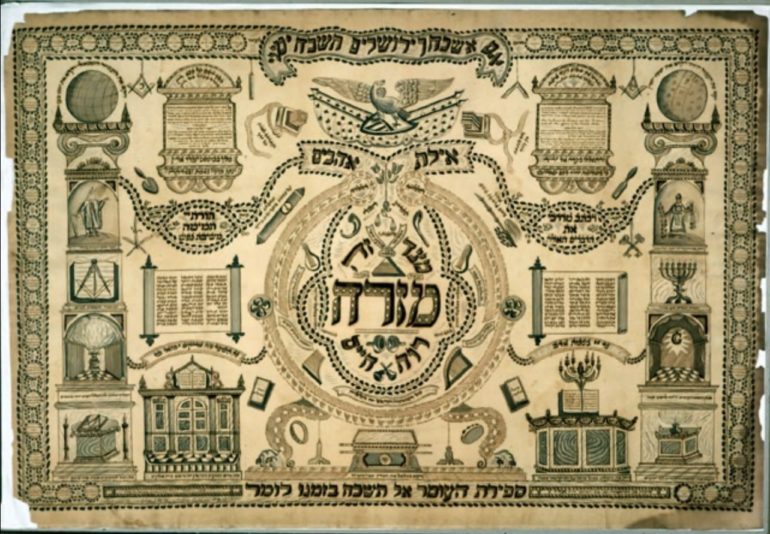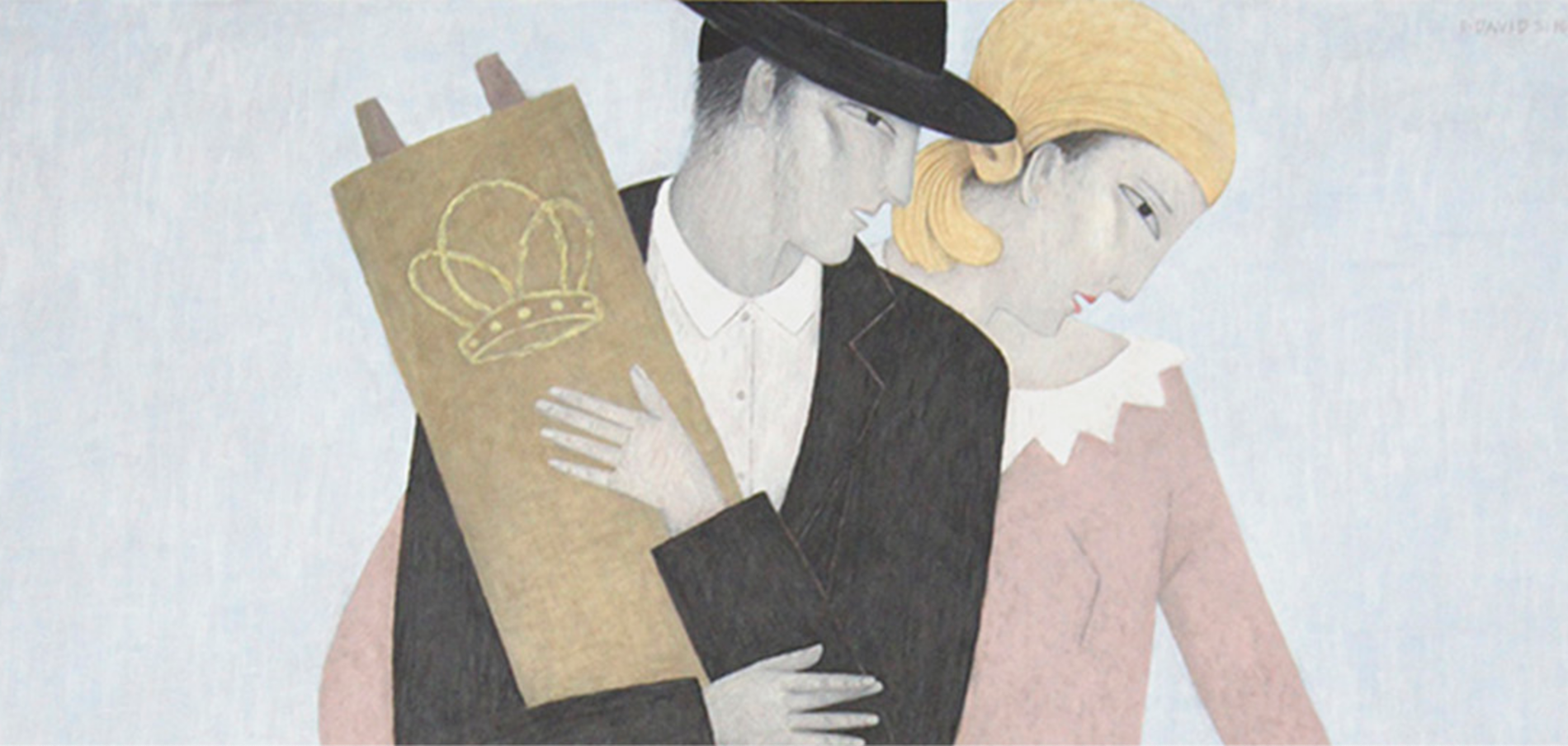
What Do the Middos of Sefira Really Mean?
Dear Jew in the City-
Is the self-improvement thing during sefirah kind of made up? What do all the middos mean or where do they come from?
All the best,
TZ
Dear TZ-
Sefirah is an unusual… I was going to say holiday but it’s not exactly a holiday, is it? It’s something we do between holidays. All the Torah commands is that we count seven weeks from the holiday of Pesach (Passover) to Shavuos. Leviticus 23:15 says, “You shall count from the day after the holiday when you bring the Omer offering, seven complete weeks.” (The Omer offering was brought on the second day of Pesach.)
According to the Sefer HaChinuch, the rationale underlying the mitzvah of counting these days is to underscore the importance of the Torah. The entire reason the Jews were redeemed from Egypt was to receive the Torah at Sinai, which happened seven weeks later. The Torah is so precious that we eagerly count the days from the Exodus on Passover until Shavuos, which commemorates the transmission of the Torah to the Jewish people at Sinai.
The Sefirah period accumulated a number of ritual practices over the centuries based on subsequent historical events. The Talmud in Yevamos recounts that Rabbi Akiva had 12,000 pairs of students who all died in one period – between Pesach and Shavuos – because they did not afford one another appropriate honor. The students died for the first 32 days of this period, so we observe most of Sefirah as a period of mourning. They stopped dying on the 33rd day, which is why Lag b’Omer (the 33rd day of the Omer) is celebrated as a holiday.
Because of the death of so many scholars, the transmission of Torah was in jeopardy until Rabbi Akiva taught five new students: Rabbi Meir, Rabbi Yehuda, Rabbi Yosi, Rabbi Shimon and Rabbi Elazar ben Shamua, who preserved the transmission. Rabbi Shimon – full name Rabbi Shimon bar Yochai – is named by the Talmud (Sanhedrin 86a) as the author of the Midrashic work the Sifre. He is also widely considered the author of the kabbalistic work The Zohar, though we’ll let the scholars debate that one. According to a variety of sources, Rabbi Shimon died on Lag b’Omer (Arizal) and he revealed many secrets of the Torah on the day of his death (Idra Zuta), so many of our Lag b’Omer customs symbolically celebrate Rabbi Shimon’s life and legacy.
According to the Zohar Chadash on parshas Yisro, when the Jews were in Egypt, they were subjected to so many forms of negative influences that they sunk to the 49th level of impurity. When God redeemed the Jews, He far exceeded His promise to our forefather Avraham in that God had only promised to redeem Avraham’s descendants bodily. Not only did He fulfill that promise, He also rescued the Jews from those 49 levels of impurity and elevated them to the 49th level of holiness. Given the use of the number 49 – the number of days in the Sefirah period – and the thematic transition from impurity (in Egypt) to holiness (with the giving of the Torah), it’s easy to see why the Sefirah period is associated with such spiritual self-improvement.
The “middos” to which you refer are found in many siddurim. These are actually seven of the ten kabbalistic “sefiros” – the qualities through which God interfaces with His creation. (Sefer Yetzirah – and I have now officially shared more kabbalistic ideas in this one article than in the entirety of the rest of my oeuvre combined). The ten sefiros are keser, chachma, binah, chesed, gevurah, tiferes, netzach, hod, yesod and malchus. (In English, for what it’s worth – and a grave oversimplification, we’ll translate them as crown, wisdom, understanding, kindness, strength, beauty, eternity, splendor, foundation and sovereignty.)
The first three (“upper”) sefiros are in a separate category (actually, two separate categories as keser is in a class by itself). The seven “lower” sefiros – chesed, gevurah, tiferes, netzach, hod, yesod and malchus – are a distinct group, alluded to by I Chronicles 29:11: “Yours, Hashem, are the greatness, the power, the glory, the victory and the majesty because everything that is in Heaven and on Earth is Yours. Yours is the kingdom, Hashem, and You are exalted as head above all.” It is on these “lower” sefiros that some people focus during the weeks and days of Sefirah. (It should be noted that the linguistic connection between Sefirah and the sefiros is a happy coincidence and not a reason that people focus on the latter during the former.)
According to this system, each week corresponds to one of these qualities, as does each day within the week. Therefore, the first week is chesed, the second week is gevurah, and the third week is tiferes, etc. but also the first day of the first week is chesed of chesed, the second day of the first week is gevurah of chesed, and the third day of the first week is tiferes of chesed, etc. So each week is dedicated to improving ourselves in one these areas and each day of that week is dedicated to a specific aspect of that week’s trait.
So, Biblically, Sefirah serves to connect the exodus from Egypt with the revelation at Sinai. Rabbinically, we mourn what was lost with the students of Rabbi Akiva. Traditionally, we celebrate on Lag b’Omer that which was restored by Rabbi Shimon. And kabbalistically, some use the Sefirah period to strengthen themselves in those particular traits that God uses to liaise with creation, a practice with historical precedent as seen by our ancestors’ journey from impurity to holiness at this time.
Sincerely,
Rabbi Jack Abramowitz
JITC Educational Correspondent
If you found this content meaningful and want to help further our mission through our Keter, Makom, and Tikun branches, please consider becoming a Change Maker today.








